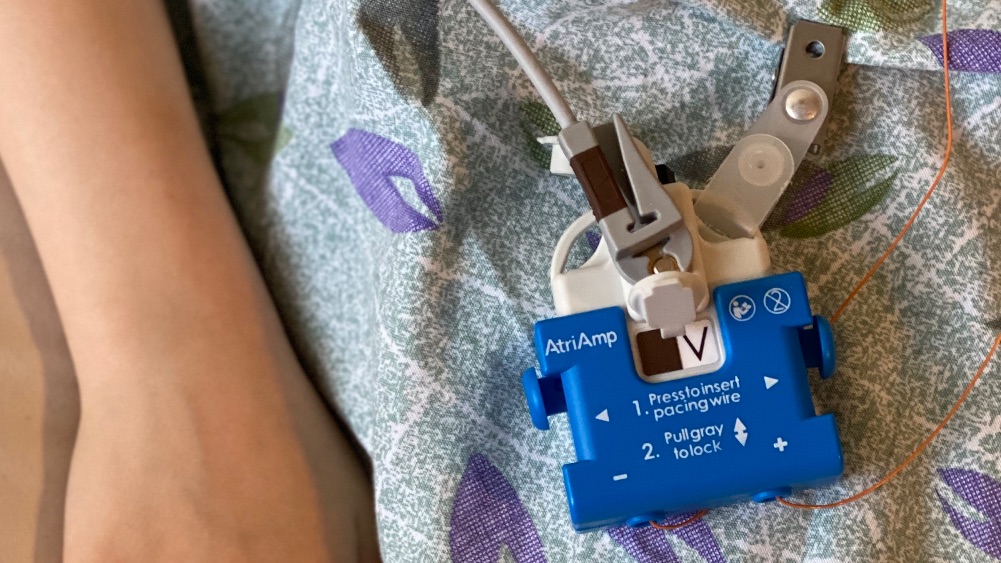
As a UW Health pediatric cardiac electrophysiologist, Nick Von Bergen, MD, specializes in caring for children with abnormal heart rhythms, making him a highly valued resource who is often consulted after a child comes out of heart surgery – a time when arrhythmias are common and occasionally life threatening.
When a specialist like Von Bergen is called in, he focuses on achieving an accurate, rapid diagnosis with a constant eye on safety. To achieve the best outcome, Von Bergen depends on accurate interpretation of the signals coming from the heart’s electrical activity. Historically, this information is obtained from the bedside monitor or an electrocardiogram (EKG) in which electrodes are placed on the patient’s chest.
Currently the most easily accessible data source, EKG’s fall short of being a “gold standard” for identification of arrhythmias, especially when every minute counts.
“In a typical case, I may be caring for a baby whose heart rate is spiking at 190 after coming out of surgery,” says Von Bergen, “I want to know if that spike is a response to the baby requiring more fluids, or if this is a potentially more serious abnormal heart rhythm we need to address. Unfortunately, bedside monitors are not precise enough and EKGs can take up to 20 minutes to set up. By contrast, a constant stream of real-time accurate data would help us diagnose heart rhythm immediately and treat the child much sooner,” Von Bergen says. “For pediatric and adult patients, having this information can save lives, prevent strokes and reduce hospital expense.”
Another EKG flaw, Von Bergen adds, is that the atrial, or upper chamber heart signals can be very hard to discern compared with the ventricular, or lower chamber heart signals.
“When we rely on bedside monitors,” he says, “discerning accurate atrial signals from an EKG can be like trying to see a small candle burning near a bonfire,” Von Bergen says. “The atrial signals are so small relative to the much larger ventricular signals.”
Sensing an opportunity for improvement, Von Bergen was confident there had to be a better way to care for his patients. He began by cobbling together alligator clips, wires and duct tape. Calling it a “prototype” would be a stretch, but his instincts were in the right place.